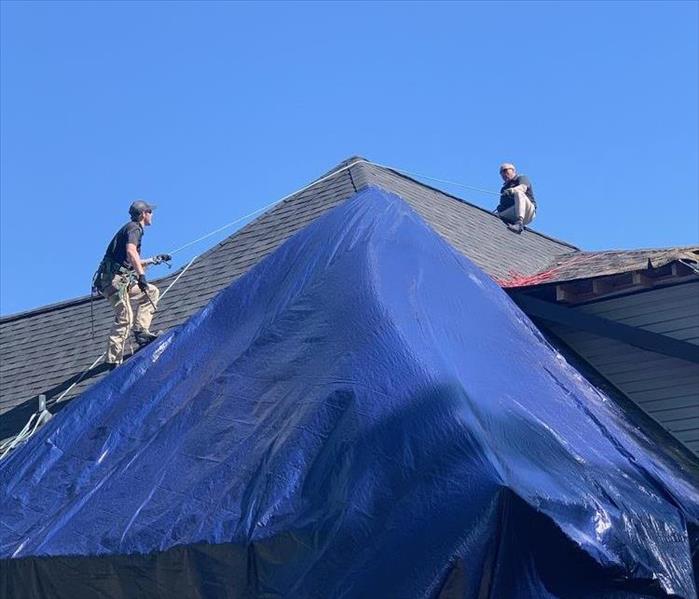Mitigating Hail Damage to Your Home or Business
9/11/2024 (Permalink)
Hailstorms can strike without warning, leaving a trail of damage in their wake. For homeowners and business owners alike, the aftermath of a hailstorm can be overwhelming. However, there are steps you can take to mitigate hail damage and protect your property. As a SERVPRO® employee, I’ve seen firsthand the difference that proactive measures can make. Here are some essential tips to help safeguard your home or business from hail damage.
Your Roof
First and foremost, inspect your roof regularly. Your roof is your primary defense against hail, so keeping it in good condition is crucial. Look for signs of wear and tear, such as missing or damaged shingles, and address any issues promptly. Consider investing in impact-resistant roofing materials, which are designed to withstand the force of hailstones. These materials can significantly reduce the likelihood of severe damage during a storm.
Windows and Doors
Another important aspect of hail damage mitigation is securing your windows and doors. Installing storm shutters or impact-resistant windows can provide an additional layer of protection. These upgrades can prevent hailstones from breaking through the glass, thereby reducing the risk of interior damage. If installing new windows isn’t an option, you can also use plywood to cover your windows temporarily when a hailstorm is imminent.
Don’t forget about your siding and exterior walls. Hail can cause significant damage to the exterior of your home or business, leading to costly repairs. Inspect your siding regularly for any signs of damage, and consider installing hail-resistant siding materials. These materials are designed to absorb the impact of hailstones, minimizing the potential for damage.
Landscaping
Landscaping can also play a role in mitigating hail damage. Trees and shrubs can act as natural barriers, absorbing some of the impacts of hailstones. However, it’s important to keep your landscaping well-maintained. Trim branches that hang over your roof or near windows, as these can cause additional damage if they break off during a storm.
For business owners, protecting outdoor equipment and vehicles is equally important. Move vehicles to a covered area, such as a garage or carport, whenever possible. If you have outdoor equipment that cannot be moved indoors, cover it with heavy-duty tarps to provide some protection against hailstones.
Insurance
Finally, ensure you have adequate insurance coverage. While taking preventative measures can reduce the risk of hail damage, it’s important to be prepared for the unexpected. Review your insurance policy to make sure it covers hail damage and understand the claims process. In the event of a hailstorm, having the right coverage can make a significant difference in your ability to recover and repair any damage.
At SERVPRO, we understand the challenges that come with hail damage, and we’re here to help. By taking these proactive steps, you can better protect your home or business and minimize the impact of hailstorms. Remember, preparation is key, and a little effort now can save you a lot of trouble in the future. Stay safe and be prepared!

 24/7 Emergency Service
24/7 Emergency Service
